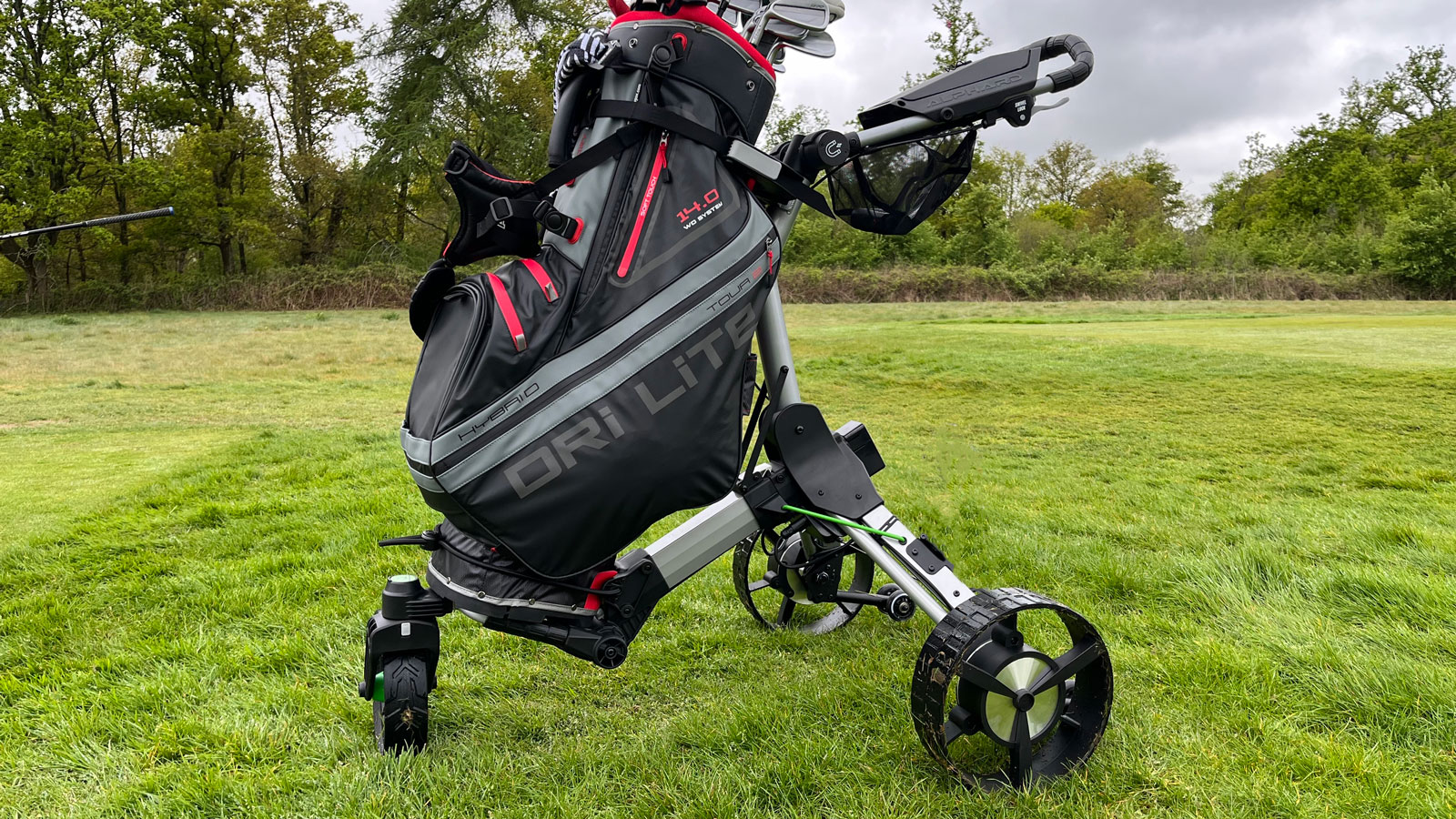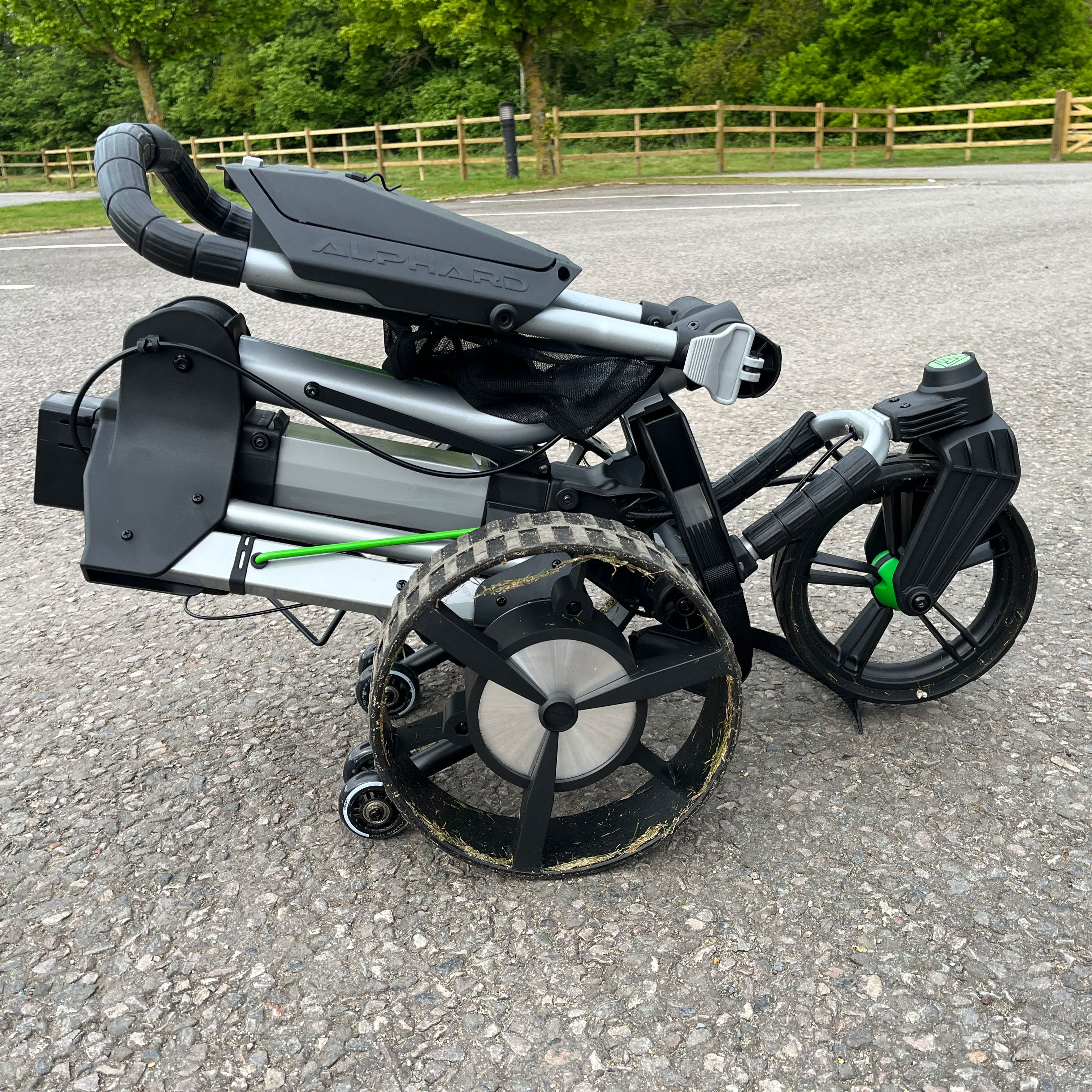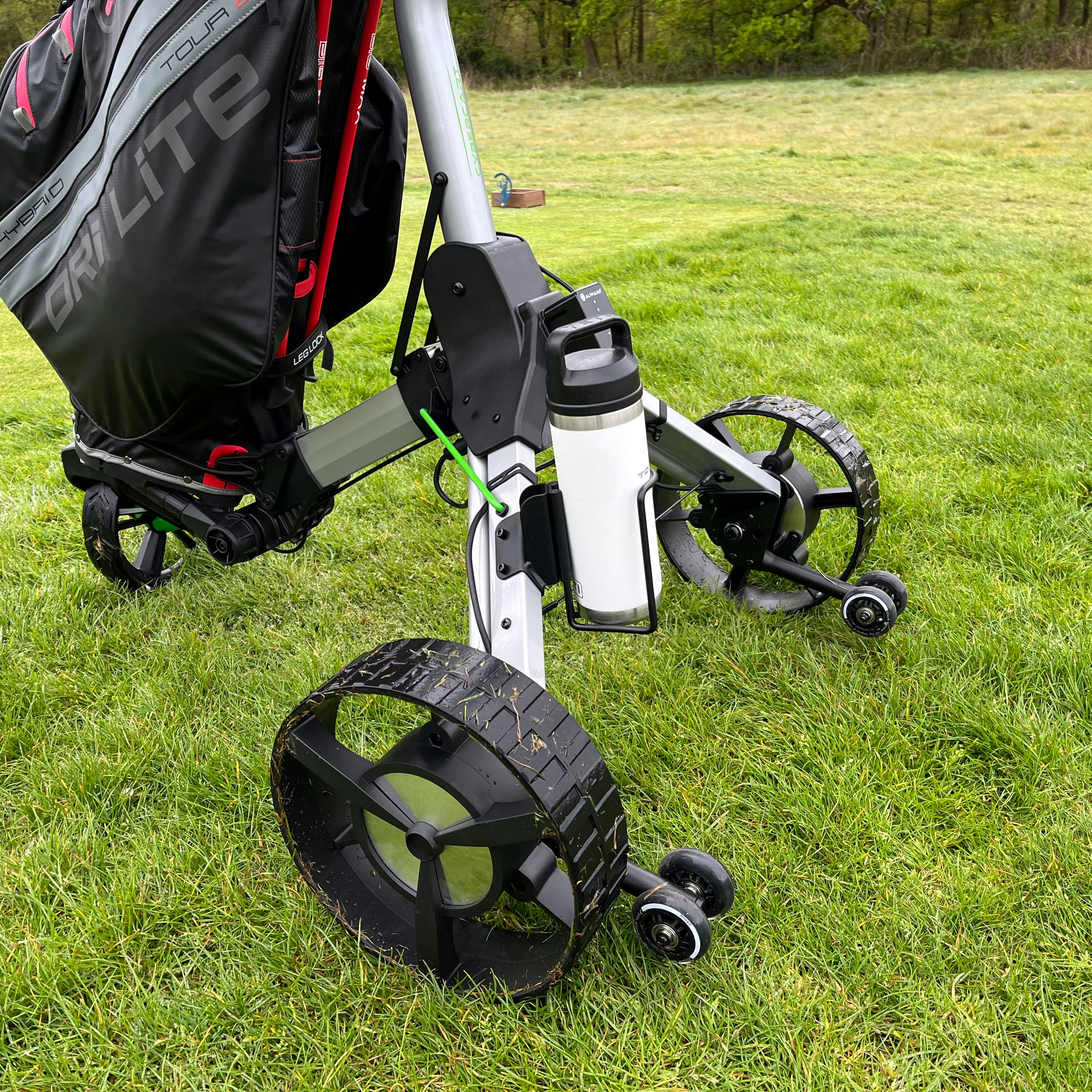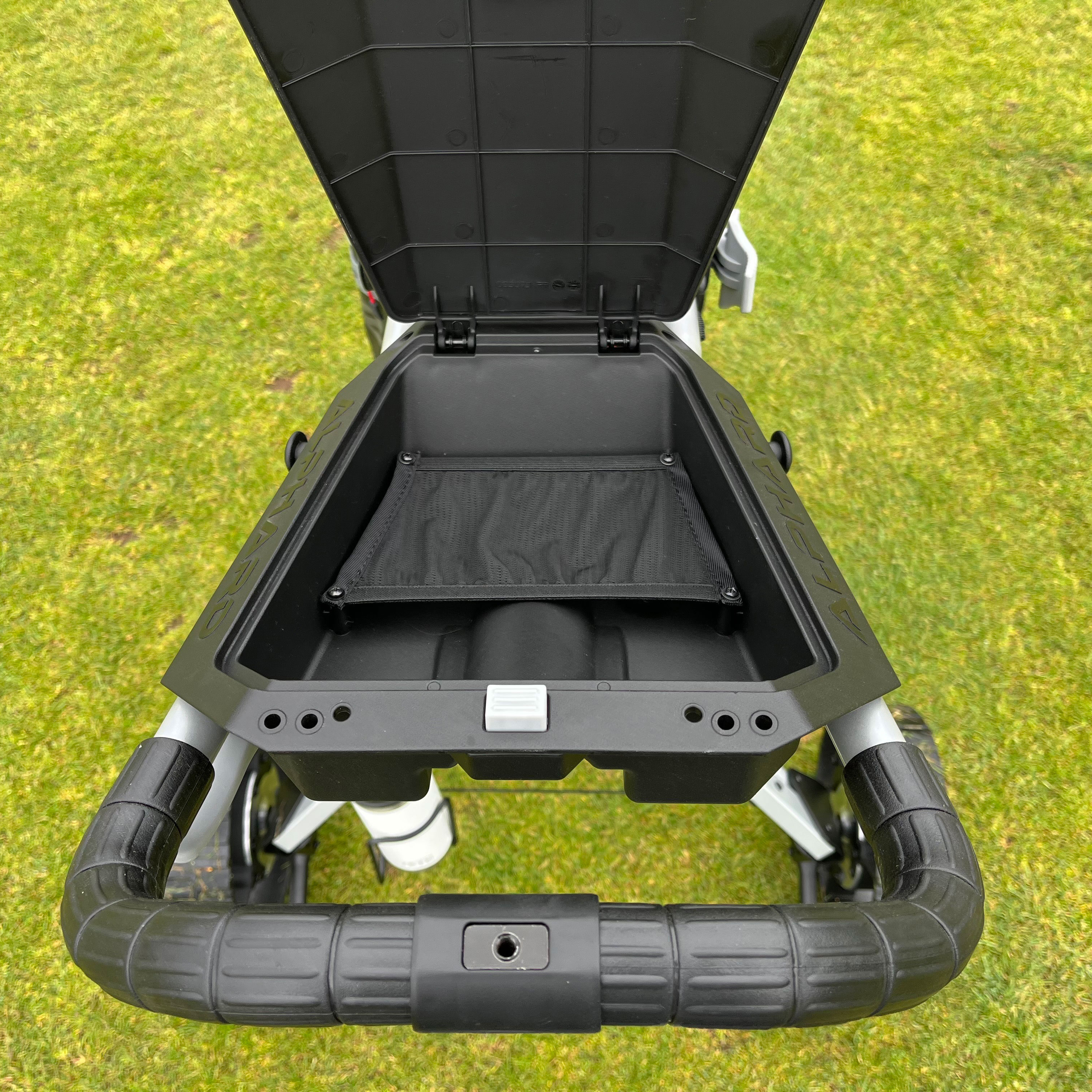I Wanted To Hate This New Remote Electric Cart But In The End I Loved It
The new Alphard Cybercart has plenty of design quirks not everyone will enjoy, but Dan Parker quickly put those to one side once he got to using it on the golf course

Never judge a book by its cover. Though the Cybercart is heavier than most and somewhat cumbersome to look at, it boasts one of the best remote experiences available thanks to a low center of gravity and excellent gyroscope technology.
-
+
Very responsive remote
-
+
Remote functionality competes with the very best
-
+
Comes with six additional accessories as standard
-
+
Extra large storage console
-
-
Heaviest of any other remote trolleys on the market
-
-
Slightly quirky design features
Why you can trust Golf Monthly

The heaviest man-made object ever measured was the RSS at Kennedy Space Center, used to support and service rockets during launch preparation. It weighs just shy of 5 million pounds. After testing the new Alphard Cybercart, I was worried this record may no longer be in tact. I am, of course, being facetious, however the sheer weight of Alphard's newest remote electric trolley has to be addressed early on as it dominated my first experience with the trolley and immediately put our relationship on the back foot.
All in all, it comes in at 18kg, which best part of 4kg heavier than the Motocaddy M7 GPS Remote, PowaKaddy RX12 GPS and Stewart Vertx Remote. When you're already dealing with 14kg trolleys here, adding 4kg to the overall weight makes it, you would think, a tough sell.
The best remote electric trolleys are naturally heavier than push carts and standard electric trolleys due to the many motors and other technology they need to house. I tested the Alphard Club Booster V2 a couple of years ago (a unique device that can turn a push cart into a remote electric trolley), and it was also a heavy design that was frustratingly complicated to set up out of the box.

The Alphard Cybercart has a large folded down footprint, but it goes up and down quickly once you've removed it from your car.
The total of 22 kgs for the entire box when the Alphard Cybercart arrived was nearly impossible to manoeuvre through to my apartment on my own. Assembling the trolley out of the box was again a complex procedure, with the wheels needing to be attached manually and the sheer height of the unfolded trolley taking up so much space.
When finally assembled, it strikes quite a large footprint in terms of both height and width. At 5ft 11 inches (me, not the trolley), I felt as though the Cybercart was squaring up to me, such was the height of my bag on the trolley. The handle height can be adjusted, but the trolley is very tall compared to the competition. This does give the trolley an advantage when it comes to its center of gravity (more on that later), but the appearance certainly takes some getting used to.
The folding mechanism is a well-thought-out, one-step system that I quickly became attuned to. It takes barely any time to fold and unfold the trolley, that is, once you’ve mustered enough strength to lift it in and out of your car.

Turns out where I put my water bottle is where you can store a sand bottle hole for filling divots. No wonder it was no good at holding my bottle!
I'll be honest with you - before I took the Cybercart out onto the course, I wanted to dislike it. I always go into my reviews with an open mind, but the 22kg box it arrived in, the less-than-subtle looks, and the general inconvenience it brought to my existence made me resent it before I even got to the golf course. As I wheeled it out in front of my playing partners, there was some laughing and pointing as I parked myself on the first tee.
Subscribe to the Golf Monthly newsletter to stay up to date with all the latest tour news, equipment news, reviews, head-to-heads and buyer’s guides from our team of experienced experts.
However, when I took it for its first spin at The Caversham golf course in Berkshire, I couldn’t help but significantly enjoy my experience with it. The remote functionality is second only to the work that Stewart Golf has done on its Vertx and V10 remote trolleys. The Cybercart was incredibly responsive to my demands via the remote control, stopping, starting and turning as soon as I asked it to. Admittedly, the remote is a little larger than those found on the Motocaddy M7 GPS Remote and PowaKaddy RX12 GPS, but the buttons are tactile and responsive enough to allow you to quickly get used to how the trolley reacts to your input.

Though larger than the competition, the remote was incredibly ergonomic and responsive to commands.
I was most impressed with how the Cybercart handled itself on rough and sloping terrain. Such is the height and width of the chassis, it has a ground-hugging center of gravity that allows it to remain stable and run true over the bumpiest of terrain. When traversing a side slope, the gyroscope built into the system keeps the trolley going in the exact line you want it to across any gradient of hill without any additional input or corrections required.

This is one of the Cybercart’s best features; once you have it travelling in the direction you want it, there is barely any input you need to put into the remote allowing you to focus on enjoying the walk. The same can’t be said for either of the PowaKaddy RX12 GPS or Motocaddy M7 GPS, both of which still require some input to keep in a straight line when going across a hill.
The Cybercart also has tremendous acceleration when you take it up to its top speed, allowing it to barrel down fairways to your golf ball with the confidence of an F1 car heading into the first corner at Silverstone.

There's also a net underneath the handle for even more storage.
Though I think the rear anti-tip wheels could have been executed with some more subtlety, there are some nice design touches dotted over the trolley. The handle area has plenty of storage options, and a net underneath gives you even more storage space if required. The elasticated bungee straps that hold the bag in place are well-made too and can be easily adjusted to securely fasten a big or small bag into the trolley. That it comes with a cup holder, umbrella holder, scorecard holder and sand bottle holder as standard is a very nice addition too, adding even more value for money.
Once my first round with the Cybercart was over, I was amazed at how much I enjoyed it. The trolley had a real battle on its hands winning me over after my initial experiences with it, and it won. Not only that, but it won me over significantly. Back in the bar, I was raving to everyone about just how impressive it was, despite everyone sniggering at how unorthadox it looked. I’ll admit the looks are still yet to win me over, but the actual usability of the Cybercart cannot be brought into question, and I really enjoyed using it over a handful of rounds afterwards.

I feel I may have been a bit harsh on the Cybercart. ‘Never judge a book by its cover’, they always say, but I still feel the overall looks and ‘vibe’ of the Cybercart leave a lot to be desired. What I’d say we’ve got here with the Alphard Cybercart is some of the best remote technology available right now, housed in a design that could have been made more visually appealing.
I think with some design flair and the ironing out of a few of its quirks, Alphard has the potential to become a real leader in the remote electric trolley space. At this price ($1,379/£1,249 RRP), the Cybercart is a more than worthy alternative to the Motocaddys, PowaKaddys and Stewart Golfs of the world.

Dan has been with the Golf Monthly team since 2021. He graduated with a Master's degree in International Journalism from the University of Sussex and looks after equipment reviews and buying guides, specializing in golf shoes, golf bags, golf trolleys, and apparel reviews. Dan is also a co-host of Kick Point: The Golf Gear Show. A left-handed golfer, his handicap index is currently 7.1, and he plays at Fulford Heath Golf Club in the West Midlands.
Dan's current What's In The Bag:
Driver: Cobra DS-Adapt X
Mini driver: TaylorMade R7 Quad Mini
Fairway: Ping G440 Max 21°
Irons: Titleist T250 (5), Titleist T100 (6-PW)
Wedges: Ping Glide Forged Pro (50, 56, 60)
Putter: TaylorMade Spider Tour X
Ball: Titleist Pro V1x
Grip: Golf Pride Tour Velvet
Bag: Vessel Sunday III
You must confirm your public display name before commenting
Please logout and then login again, you will then be prompted to enter your display name.